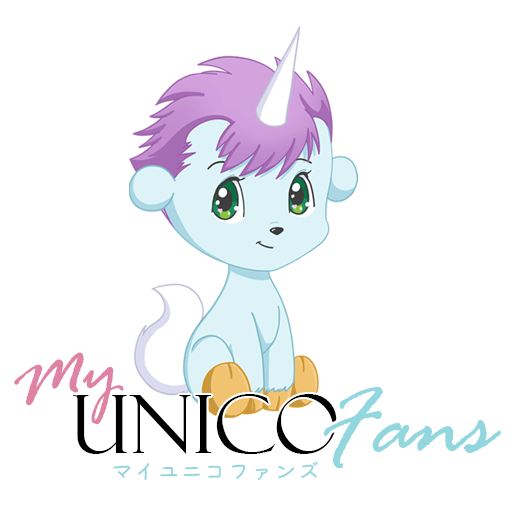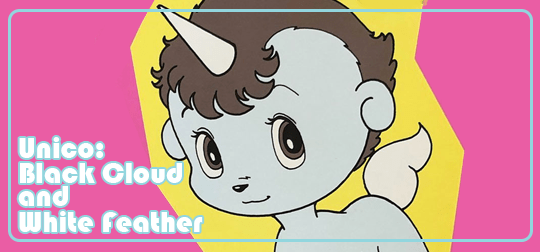

With the Unico manga doing well in Sanrio’s Lyrica magazine, an anime went into production. On September 1, 1978 (Friday), Strawberry News (Ichigo Shinbun), a monthly newspaper put out by Sanrio, released information on the pilot episode. The short was based on the 7th chapter* published in Lyrica magazine (issue 20, June 1978) titled “Black Rain and White Flower” (Kuroi Ame to Shiroi Hana).
The article mentioned the pilot episode was aiming for completion in October 1978 and shared information on Sanrio’s production, which included shots of the script, color spec sheet for Unico, and more.
The pilot episode’s title would end up being, Unico: Black Cloud and White Feather (Yuniko: Kuroi Kumo to Shiroi Hane).
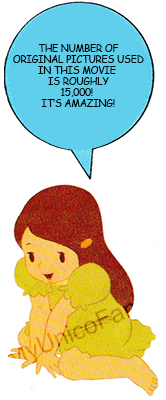
Like many anime being produced up into the early 2000s, transparent cels and special paint were used to create the animation. Each cel was placed over a background and shot one frame at a time, then edited again according to the storyboard. Toshio Hirata directed the episode while Susumu Aketagawa was the producer. Unlike the movies, they made the episode in-house with Sanrio’s animation department. While they kept the overall plot, there are several differences between the animation and manga.
Similar to the comics, the pilot has Unico wandering a polluted city. When he finally meets the young girl, Chico, she is very sick because of the black rain. When Unico flies Chico out to cleaner air, black clouds spread, keeping even Zephyrus from reaching the two. The Black Cloud will not let her pass, as it’s focused on staying there and watching the people die. Determined to save Chico and all the other people living within the Black Cloud’s reach, Unico flies to the factory to destroy it. After the clouds disappear, the sun and blue skies return, but Chico is still ill.
Zephyrus appears before Unico on his way back and tries to take him away once more. When he mentions Chico will die if he leaves, she gives him a small bouquet of white flowers to give to her. Unico gives the flowers to Chico and leaves. The flowers heal Chico and she searches for Unico, who is then being carried off by Zephyrus.
By the end of the episode, we see Unico alone in a dark place, similar to the one we see in the first movie where he meets Akuma-kun.
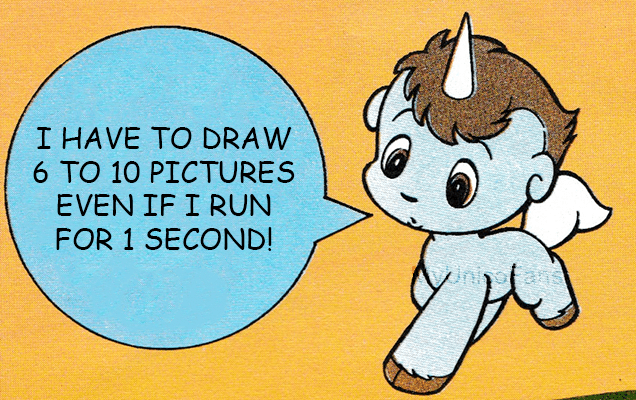
It is unsure why the pilot episode was named “Black Cloud and White Feather” when there isn’t a white feather involved. In the manga, a feather given to her by the Prince of Fairies, heals Chico. The pilot episode’s ending may have been the original concept, but Tezuka changed it.
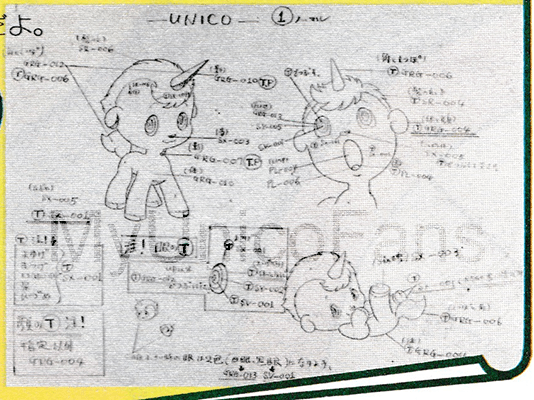
On April 30, 1979, they screened the pilot episode and other animations to a group of Tezuka fans that formed the Osamu Tezuka Fan Club. The episode was never released to theaters but was put out on video formats such as LaserDisc and VHS.
Mickie Yoshino, Yukihide Takekawa, and other members of the Japanese rock band, Godiego arranged and performed the music. Aketagawa, producer of the pilot, had used the band previously for Sanrio’s other animated film, “Metamorphoses” (Winds of Change/Hoshi no Orpheus) after the managing director wanted the music replaced to “disco-styled” as it was popular in Japan.* Katsumi Kahashi would provide the vocals for the songs.
For more information about Toshio Hirata and the pilot episode, we recommend this article: An Honorary Compendium of Writings on Toshio Hirata (平田敏夫) and His Collaborators – on the ones (wordpress.com)
| Cast | |
|---|---|
| Unico | Hiroya Oka |
| West Wind | Kyoko Kishida |
| Chiko | Minori Matsushima |
| Black Clouds | Junpei Takiguchi |
| Mouse/Rat/Garappachi | Kimotsuki Kenta |
| Grandfather | Ichiro Arishima |
| Staff | |
|---|---|
| Original work/Supervision | Osamu Tezuka |
| Director | Toshio Hirata |
| Art | Yukio Abe |
| Producer | Susumu Aketagawa |
| Music | Yukihide Takekawa / Mickie Yoshino |
| Production Cooperation | Tezuka Productions |
| Composed and Arranged | Yukihide Takekawa / Mickie Yoshino |
| Lyrics | Akira Ito |
| Vocals | Katsumi Kahashi |
| Performed by | Yoko Narahashi; Godiego, Shin Shitsunai |
* Notes:
– The Chapter 7 “Black Rain and White Flowers” (Kuroi Ame to Shiroi Hana) was later renamed to “Black Rain and White Feather” (Kuroi Ame to Shiroi Hane) and rearranged to be Chapter 4 in all other published versions.
– For the Metamorphoses (Winds of Change/Hoshi no Orpheus) animation, Mick Jagger had composed music for the film as well as Joan Baez and The Three Degrees. It was produced in the USA and when it was shown in Japan, that’s when the managing director wanted it changed.
<< Back
Sources:
- “Unico no Tanjou!” Ichigo Shinbun (Strawberry News), 1 September 1978, pp. 23
- 【明田川進の「音物語」】第8回 「星のオルフェウス」制作秘話と、ロスで手塚先生のお手伝いをした話 : ニュース – アニメハック (eiga.com)
- 1970s|HISTORY|ABOUT TEZUKA OSAMU|TEZUKA OSAMU OFFICIAL
- ゴダイゴ – Wikipedia
